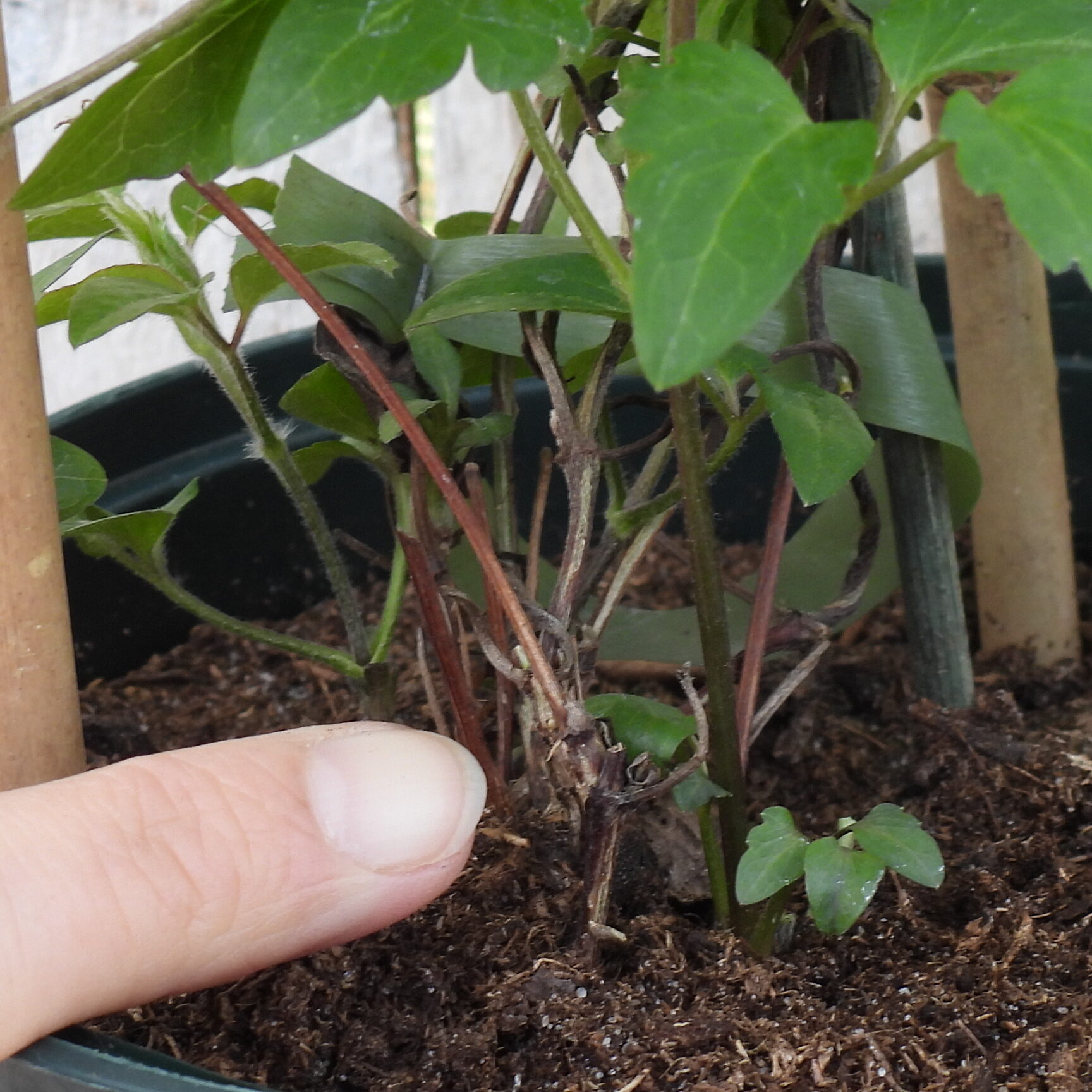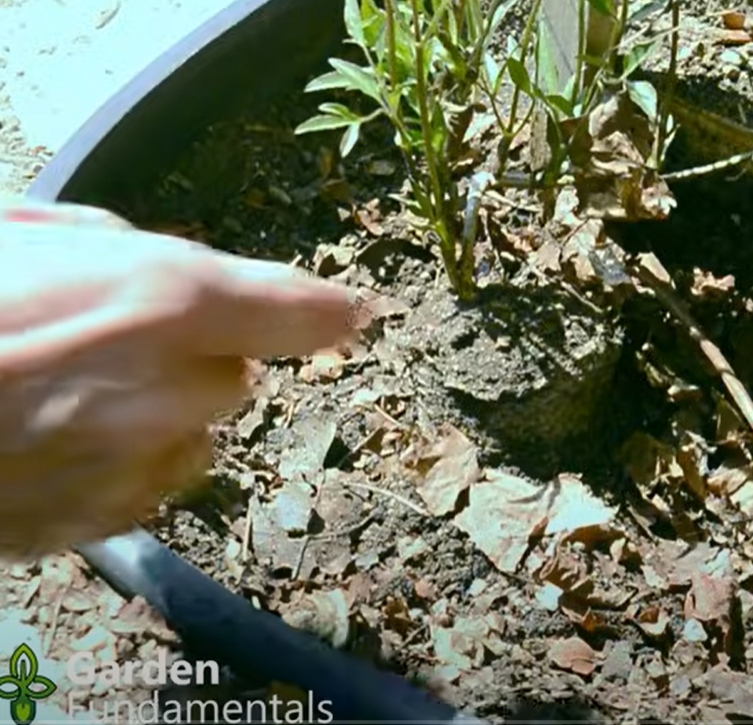Table of Contents
Most people plant their Clematis vines a little deep, the British Clematis Society says:
“Ensure that the surface of the root ball is at least 3″ / 7.5cm below the level of the surrounding soil.”
In our clematis growing guide, we add that even up to 6″ / 15cm below soil level is good for larger plants, more specifically:
Clematis in 2 – 3 Litre pots: The crown of the plant (where the stem/s emerge from the compost in which it was grown) should be at least 3-4″ / 8-10cm below soil level; a larger specimen with a really strong, woody stem can go about 6″ / 15cm deep.
Clematis in 9cm pots: First, read our post on P9 pots: we usually recommend growing them on in larger pots first.
Place these younger plants at least 3-4″ / 8-10cm deep in the hole, but do not return the soil all the way up over the stem until it has become woodier, which is usually the winter following planting. Then cover it up so that at least one stem node is buried.
And here is the reason for that:
Why Plant Clematis Deep in the First Place?
The reason is to bury at least one node on a woody, “ripe” stem, soft new growth less than a year old doesn’t count.

Underground, the buds on that mature node will root and make multiple new shoots.
- This gives the plant a stronger foundation of roots that can support a fuller plant above ground faster
- The extra vines allow susceptible Clematis groups to outgrow Clematis Wilt Disease, and the crown itself is protected underground
Does this apply to every Clematis group?
No, the small-flowered Clematis groups Atragene, Montana, and Tangutica, and all non-vining, perennial “bush” varieties, are fine to plant at soil level*, according to Ken Black and clematis.com.pl, Poland being one of the leading Clematis breeding nations.
According to the RHS,
“Several of the large-flowered hybrid cultivars are very susceptible [to wilt disease], but the smaller flowered species appear to be much more resistant.”
But in practice, people do plant these wilt resistant clematis groups deep all the time, so it’s clearly not a problem for them, even if there is no benefit, at least for disease prevention.
Never Plant a Clematis Shallow
Avoid planting clematis high like the valiant specimens pictured below: they survived, plants are generally tough, but for sure they struggled a lot more than necessary.

*As clematis.com.pl notes, which applies to every potted plant, “planting at soil level” ideally means that your hole is 1cm deeper, so you can sweep a thin layer of the new, native soil over the top of the rootball. This protects the top of the potting soil from drying sun and wind; especially important on clay rich soils, and if mulch won’t be used.
